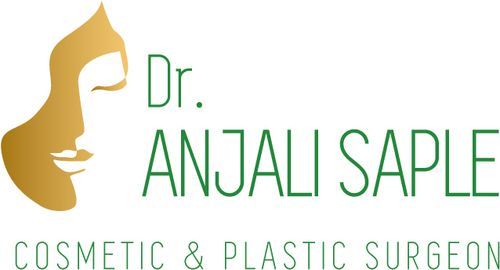As we age, our skin undergoes various changes, leading to loss of volume, elasticity, and overall youthful appearance. To combat these signs of aging, many individuals explore cosmetic procedures that restore facial features and enhance skin quality. Among the most popular techniques are nano fat grafting and traditional fat grafting. Understanding the differences between these methods can help you make an informed decision about which one may be better for your facial rejuvenation goals. Dr. Anjali Saple, a trusted expert in aesthetic transformation in Vizag, provides insight into these two fat grafting techniques.
Understanding Fat Grafting Techniques
1. Traditional Fat Grafting
Traditional fat grafting, often referred to as autologous fat grafting, is a well-established cosmetic procedure that utilizes the patient’s own fat to restore volume to the face.
Procedure Overview:
- Harvesting Fat Cells: The process begins with liposuction, where fat is extracted from donor areas of the body such as the abdomen, thighs, or buttocks. This fat contains viable adipocytes, or fat cells, that can be used for grafting.
- Purification: The harvested fat is then processed and purified to remove impurities, allowing for a concentrated product ready for injection.
- Injection: The purified fat is carefully injected into targeted areas of the face, including:
- Nasolabial folds: The lines running from the nose to the corners of the mouth.
- Tear troughs: The hollows beneath the eyes can create a tired appearance.
- Cheeks and chin: Areas that may require added volume for improved contours.
Key Features:
- Invasive Procedure: Traditional fat grafting is considered a surgical procedure, requiring anesthesia and a longer recovery period compared to non-invasive methods. Patients can expect swelling and bruising, which may take time to resolve.
- Volume Restoration: This technique is particularly effective for patients seeking significant volume restoration in the face. It can help fill deep wrinkles, restore lost facial contours, and improve the overall aesthetic appearance.
- Risks of Complications: As with any surgical procedure, traditional fat grafting carries potential risks, including infection, asymmetry, fat necrosis (where the injected fat does not survive), and uneven results.
2. Nano fat Grafting
Nano fat grafting, or nano fat grafting, is a more innovative approach to fat transfer that focuses on extracting and processing fat into a finer substance, which includes a high concentration of regenerative cells and factors.
Procedure Overview:
- Harvesting Fat: Similar to traditional fat grafting, fat is harvested through liposuction from a donor site.
- Processing: The harvested fat is processed using specialized techniques to create a product that is composed primarily of tiny fat particles and a concentration of adipose-derived stem cells. This process retains the extracellular matrix, which plays a vital role in tissue regeneration.
- Injection: The resulting nanofat is then injected into the targeted facial areas through precise injections using fine cannulas. This technique allows for:
- Treatment of Fine Lines and Wrinkles: Nanofat is particularly effective in addressing superficial wrinkles and enhancing skin texture.
- Improvement of Skin Quality: The regenerative properties of the injected fat enhance collagen production and promote healing, leading to improved skin quality over time.
Key Features:
- Minimally Invasive: The injection sites for nano fat grafting are smaller, resulting in less trauma to the surrounding tissue and quicker recovery compared to traditional fat grafting.
- Regenerative Benefits: In addition to volume restoration, nanofat grafting promotes collagen production and enhances tissue regeneration. This leads to improved hydration, elasticity, and skin quality.
- Single Session Efficacy: Many patients experience noticeable improvements after just one session, making it a convenient option for those seeking facial rejuvenation.
Nanofat Grafting: Natural Skin Revitalization
Nanofat grafting is a cutting-edge treatment that uses your own fat to rejuvenate and heal the skin. This minimally invasive procedure improves skin texture, reduces wrinkles, and enhances your natural glow by boosting collagen production for a youthful appearance.

Comparing Results
Nanofat Grafting
-
Facial Rejuvenation: Ideal for those looking to rejuvenate their appearance with subtle enhancements. Nano fat grafting is especially effective in treating:
- Fine lines around the eyes and mouth.
- Dark circles under the eyes.
- Overall skin texture and tone.
-
Skin Quality Improvement: The nano fat treatment significantly improves skin quality by:
- Promoting collagen production, which can restore skin elasticity and firmness.
- Enhancing the skin’s overall hydration, leading to a healthier and more youthful appearance.
-
Subtle Enhancements: This technique offers a more natural look, providing facial volume while rejuvenating the skin’s surface, which results in a more youthful glow.
Traditional Fat Grafting
-
Volume Restoration: Best suited for individuals needing substantial volume restoration, such as those with:
- Deep facial wrinkles and folds.
- Hollow areas in the cheeks or under the eyes.
-
Long-term Results: Traditional fat grafting can provide long-lasting volume; however, it may require additional sessions to maintain desired results, especially as natural aging continues.
Choosing the Right Technique
When deciding between nano fat and traditional fat grafting, consider the following factors:
-
Consultation: Schedule a thorough consultation with Dr. Anjali Saple to discuss your specific goals, concerns, and overall health. This discussion will help identify which procedure aligns best with your aesthetic desires.
-
Evaluation: During the consultation, Dr. Saple will evaluate your skin quality, facial structures, and specific areas of concern. Understanding your unique needs will aid in formulating an effective treatment plan.
-
Treatment Plan: A personalized treatment plan will be established, factoring in your lifestyle, recovery preferences, and aesthetic goals. Dr. Saple emphasizes setting realistic expectations regarding the results you can achieve with either technique.
Key Considerations
-
Recovery Time: Nano fat grafting typically offers a quicker recovery period than traditional fat grafting. Patients may experience minimal swelling and bruising, allowing them to return to their daily activities sooner.
-
Risk of Complications: Both procedures have associated risks; however, the minimally invasive nature of nanofat grafting generally results in fewer complications compared to traditional methods.
-
Results: Consider what you aim to achieve. If your primary concern is significant volume restoration, traditional fat grafting may be preferable. If you desire skin rejuvenation along with subtle volume enhancement, nanofat grafting could be the better option.
Conclusion
Both nano fat grafting and traditional fat grafting are effective methods for facial rejuvenation, each offering unique benefits. While traditional fat grafting excels in volume restoration, nano fat grafting stands out for its regenerative capabilities and overall skin quality improvement.
To determine the best approach for your individual needs, consult with Dr. Anjali Saple, a board-certified plastic surgeon in Vizag with 25+ years of experience in aesthetic transformation. Her expertise in facial rejuvenation and commitment to patient care ensures you receive personalized guidance and treatment tailored to your goals.
For more information about nano fat grafting in Vizag or to discuss your concerns regarding facial rejuvenation, contact Dr. Anjali Saple today. Your journey to a more youthful and vibrant appearance begins here!



